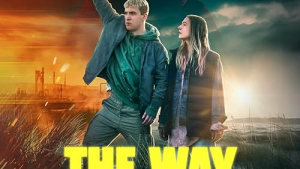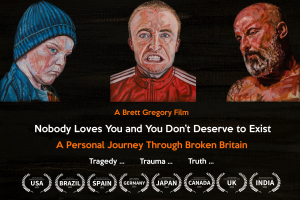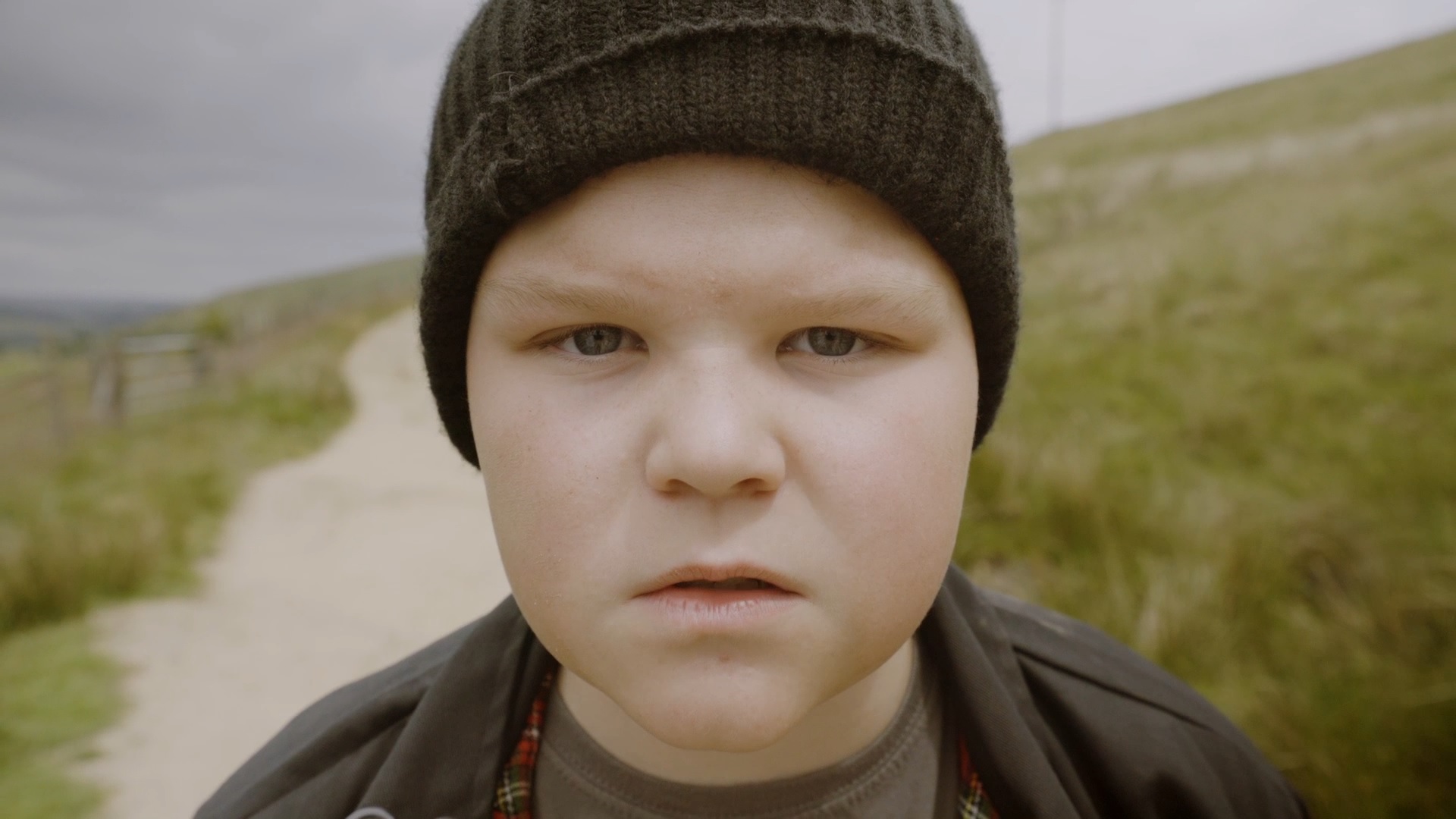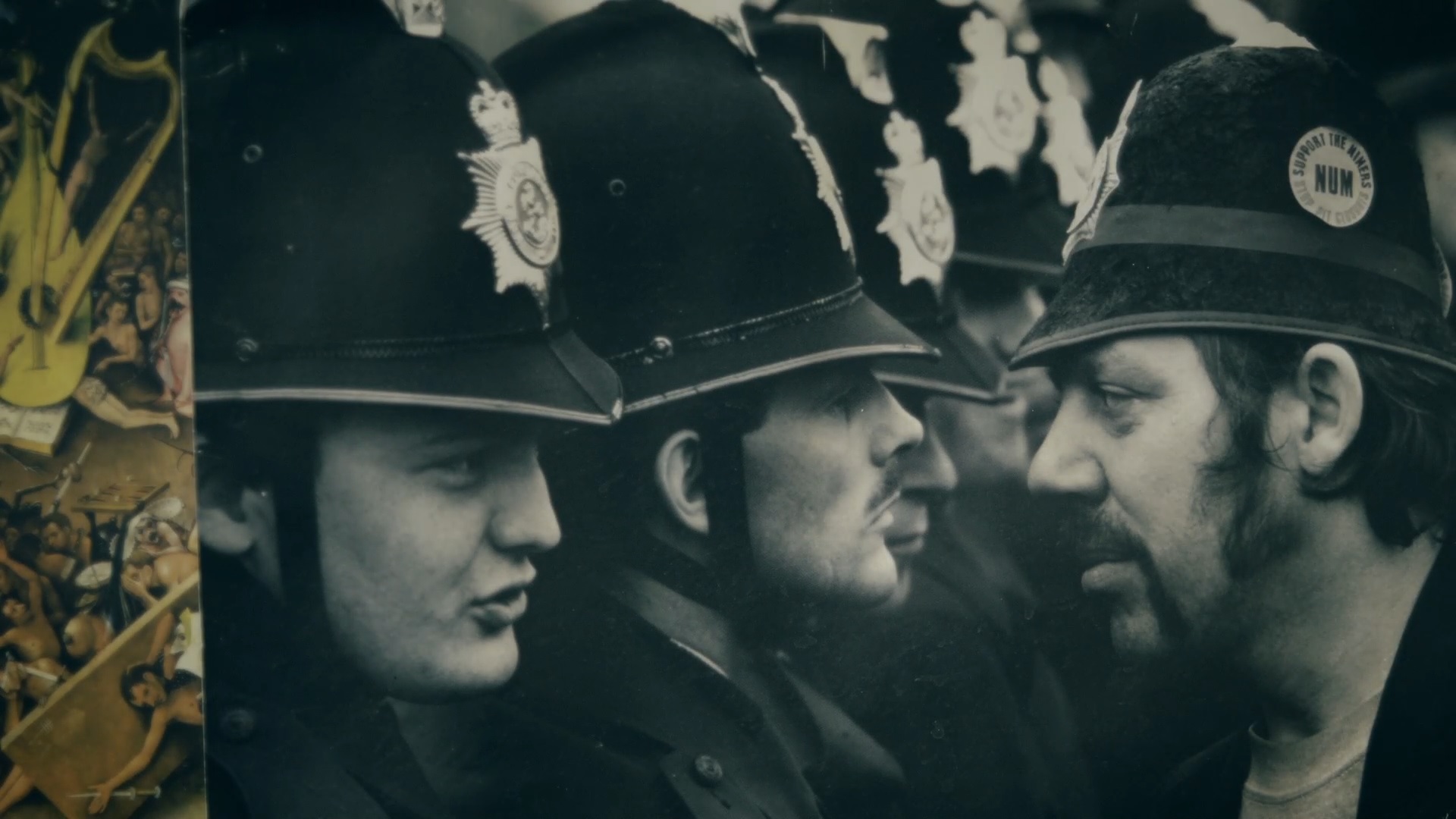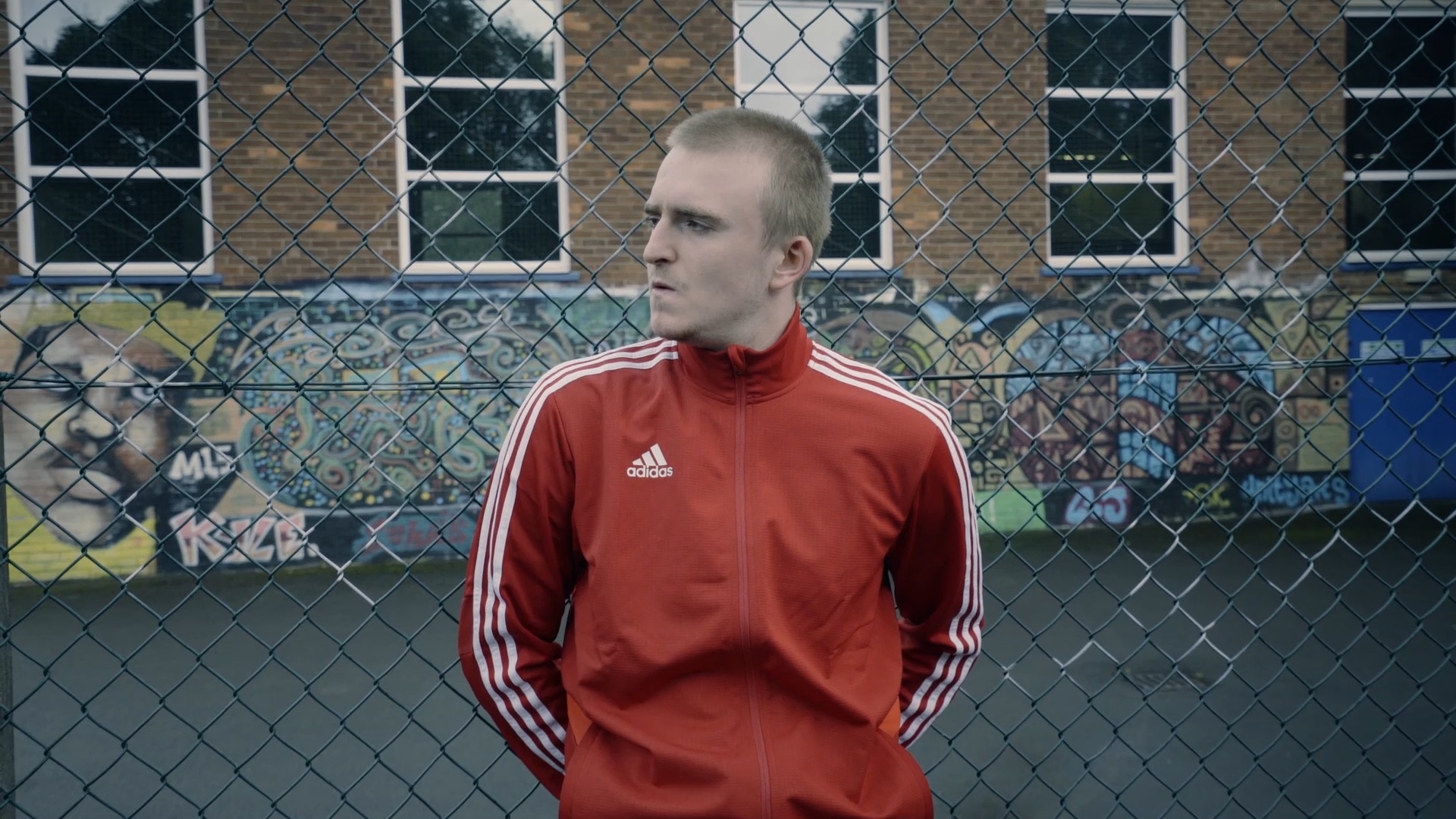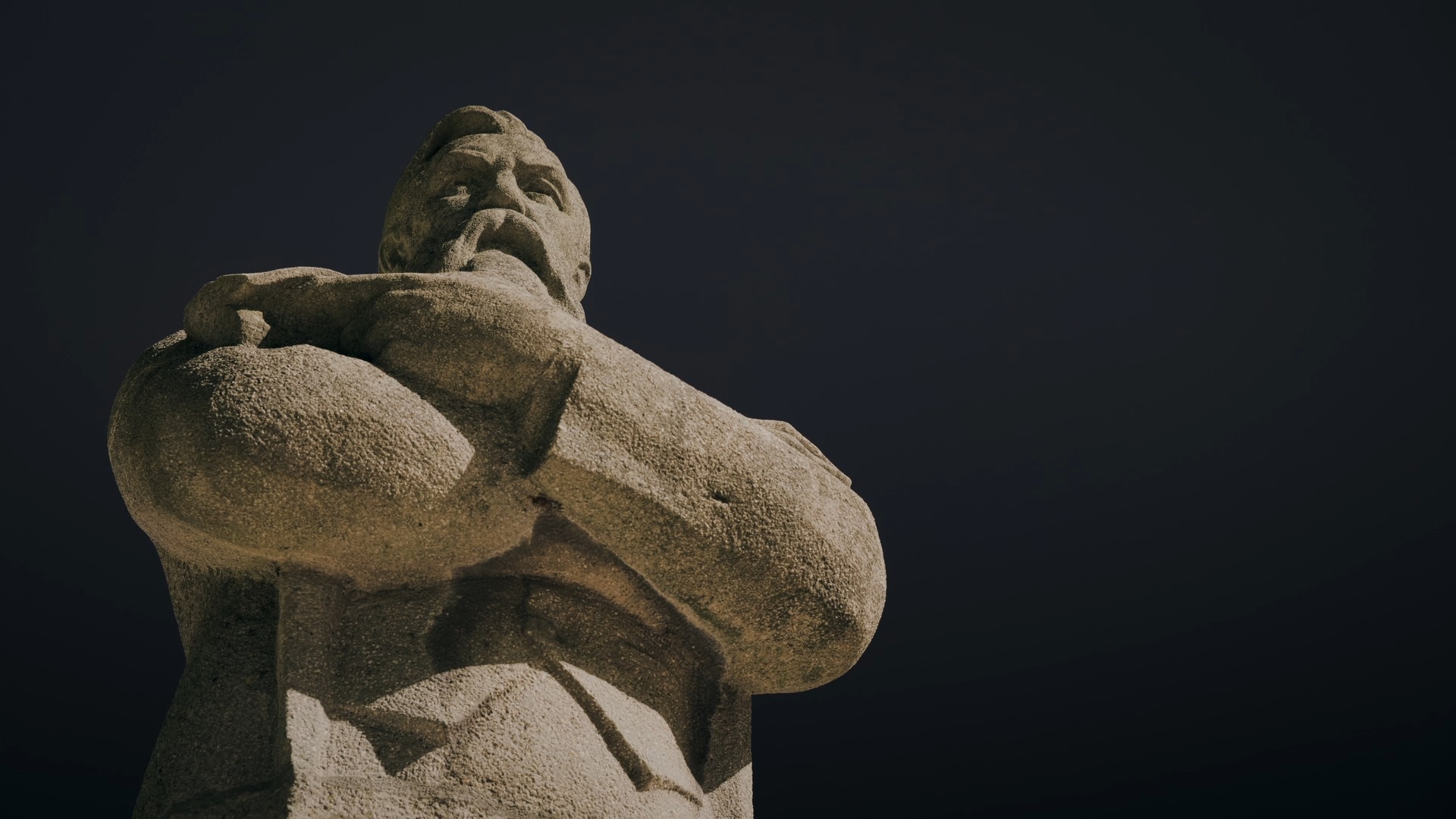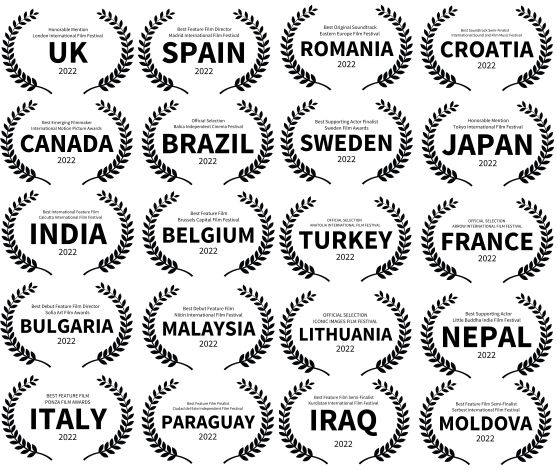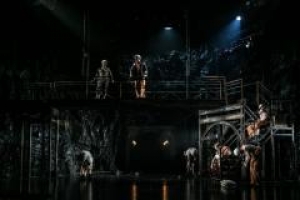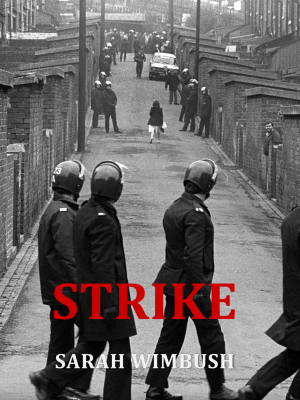
STRIKE by Sarah Wimbush
While in the belly of England
the strike to end all strikes erupts.
Whether Churchill or Göring said it first, the adage goes that history is written by the victors. And yet certain dates that denote calamitous defeat remain and will not go gently, even though what actually took place and the reasons for it happening are contested and chewed over for ever after. 1819, 1916, and 1926 are examples – and the Miners’ Strike of 1984/5 is another.
At the time, it was difficult to get a truthful and accurate handle on day-to-day events. There was no internet or social media. News of what was taking place across the UK was tightly controlled. Coming from a coal mining community in Fife, I heard firsthand from family on the picket line what was happening and which wasn’t being reported nationally.
The instigator of it all, Thatcher, was not about to reveal publicly her true fanatical intent – to obliterate the coal mining industry and the NUM, sacrificing jobs and communities in the process to serve her class hatred and a selfish, ideologically-driven political goal. The extent to which the various police forces, the judiciary, the right-wing media, were in on the planning of the jamboree was debatable but in a sense irrelevant. This was about who would control Britain in the future – and the “enemy within” had to be silenced, whatever the price.
The BBC’s manipulation of the truth
Back then most folk got their news from BBC/ITV. A constant argument that continually misses the point is whether the BBC is biased toward the right or the left. The BBC, as it has been since the days of its first director, John Reith, is committed heart and soul to upholding the British Union. It was formed under royal charter to be an arm of an undivided, one nation state, a dumbed-down One Show imposing from the capital an establishment myth from Land’s End to John o’ Groats, from Jarrow to Derry, that recognized no diversity of ethnicity, religion, culture, social class or nationality. As is still the case, some in the BBC believed arrogantly that in any national identity crisis they could simply ignore facts and set a fictitious agenda, rather than report what was actually going on. Thus footage was reversed, and Orgreave became a story of nasty football hooligans knocking off policemen’s helmets.
As in 1926, among the ranks of left-wing politicians there was division and shoe-gazing. Kinnock, the Labour Party leader, behaved throughout like a shifty cross between Pontius Pilate and Judas Iscariot. Many miners themselves were unsure about what to do in the face of Thatcher’s intensifying provocation. Arthur Scargill, the NUM leader, although a rousing and crowd-carrying speaker, did not enjoy full support across all the regional coalfields, and many questioned his tactical nous and sudden rise to leadership. But how best to save an industry, the jobs, the communities, in the face of disunity, implacable media bias and the might and resources of the British state?

Photographer: © Ken Wilkinson, image courtesy of the National Coal Mining Museum, England
40 years after Orgreave, the Miners’ Strike has been rewritten, altered, edited, twisted, deleted and lied about in a continual process of often fake recollection and interpretation. That is why successive Tory governments have denied the opportunity for an independent inquiry into Orgreave – they, out of all involved, have the most to hide. To its credit, the Scottish government initiated an independent review of policing in Scotland during the Miners’ Strike. As a result, some truth was allowed to surface, and wrongly convicted miners were pardoned. All sides were given their say, but the important thing was that those victims who had been marginalized and kept silent for almost 40 years could finally tell their story. I sat through some of these meetings and the outpouring of joy, grief and sheer released frustration was something to behold.
At the time the conflict was taking place the deliberately murky and misconstrued reporting enabled some to be equivocal in their support of the miners, while others were diverted by it from comprehending the enormity of what was at stake. In Alan Hull’s words: a line of freedom or a line of kings. The wrong side won, and we’ve had to pay dearly for that ever since.
Poems and photographs combined
STRIKE by Sarah Wimbush is an important published piece of testimony – an accurate witness account providing evidence from pen and camera, a scrupulous forensic inquiry and work of art, put together through the lens of hindsight and poetry.
The photographs from the time are an immediate shock. This is what it really looked like! It all comes back – the horrible eighties fashions, the poverty, the vandalized streets, the surprise of seeing booted, helmeted police bullying and strutting in a supposedly democratic country. A frozen second of the zeitgeist, a visual trigger. As soon as I saw these images I was taken right back to ’84 and was forced to reconsider all that had changed in our society since and to realize why the Miners' Strike was such a tipping point. Accompanying each photograph is a poem; an interpretation of the meaning and significance of the adjacent image.
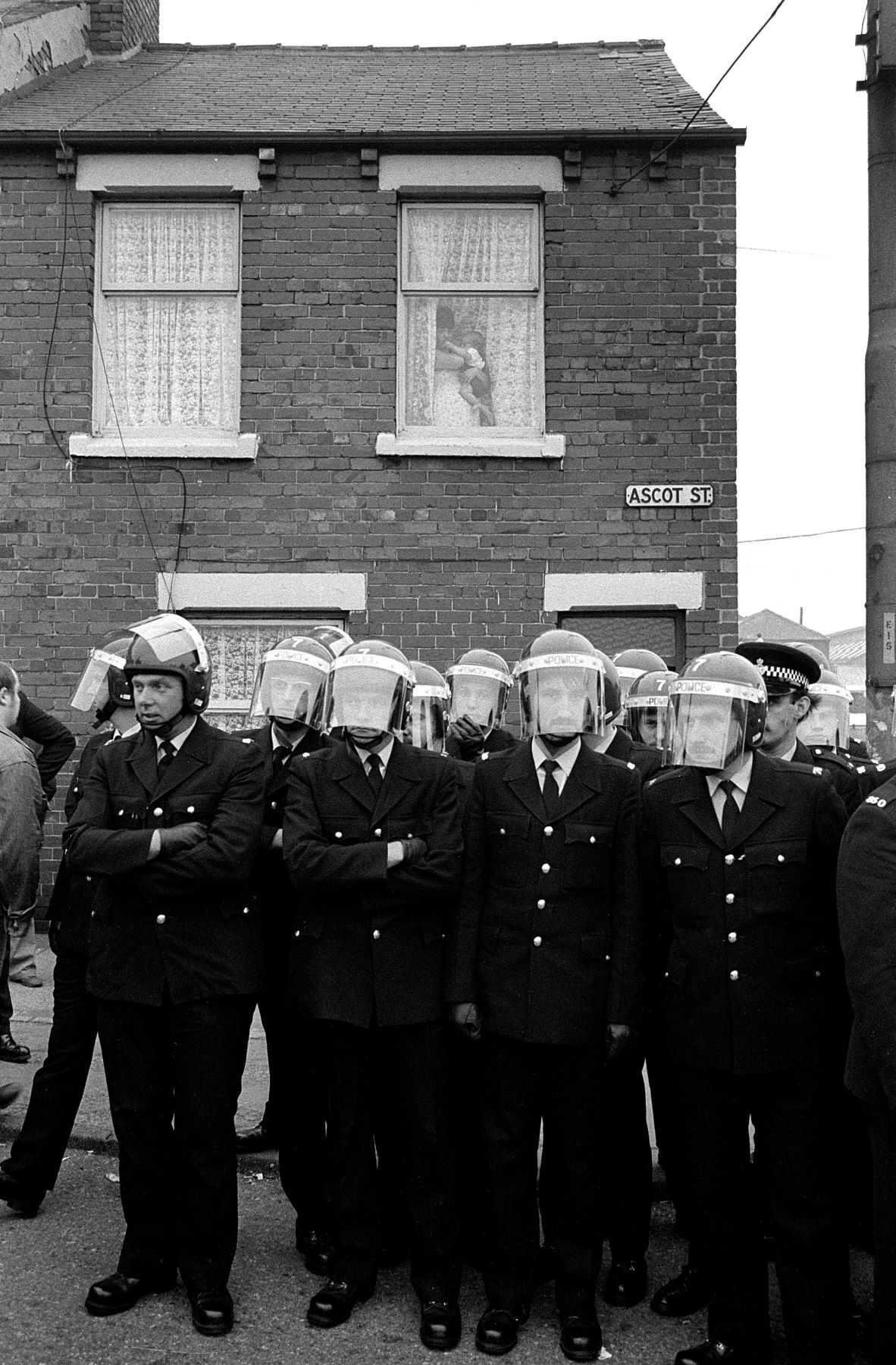
Easington Village under occupation. 1984. © Keith Pattison
The photographs have been collated from various sources that include: The National Coal Mining Museum England; Amgu Cymrueddfa – Museum Wales; the National Mining Museum Scotland; Lesbians and Gays Support the Miners, the Guardian and many other sources. A broad body of evidence that when put together confront us as a stark reminder of all that was done in malice and spite against a helpless section of British society, a scattered underground tribe with its unique language and culture. Miners, wives and bairns were targeted for who they were by a vengeful state. Individually the photographs function like stills from a black and white film, with each providing a backstory, an insight into defiance, endurance, betrayal, bewilderment, hunger, violence, laughter, solidarity, recrimination, resentment.
Sarah Wimbush is a poet of intelligence and insight but with an understanding of how poetry works and with the technical skills, the hawk-like eye for detail, the brevity and compression to back it all up. Her words and images are incisive, precise, concise, vivid and telling. They go deep and resonate with meaning, allusion and association. She makes a seemingly off the cuff metaphor do the work of an entire back shift of words. She takes an oft-shouted slogan and reveals its irony.
This works very effectively with photographs of the protagonists. You are taken from the image into minds and thoughts, you go further into the DNA that shapes the personalities and their decisions:
Here’s Kinnock:
Some say he is a funeral mute: a man compressed
between left and left.
Some shall say he was father to Blair.
Here’s Scargill:
The dictionary is his Bible. Full stop.
He points at the dole-not- coal paddy train,
it will arrive shortly at the Platform Do-or-dinosaur.
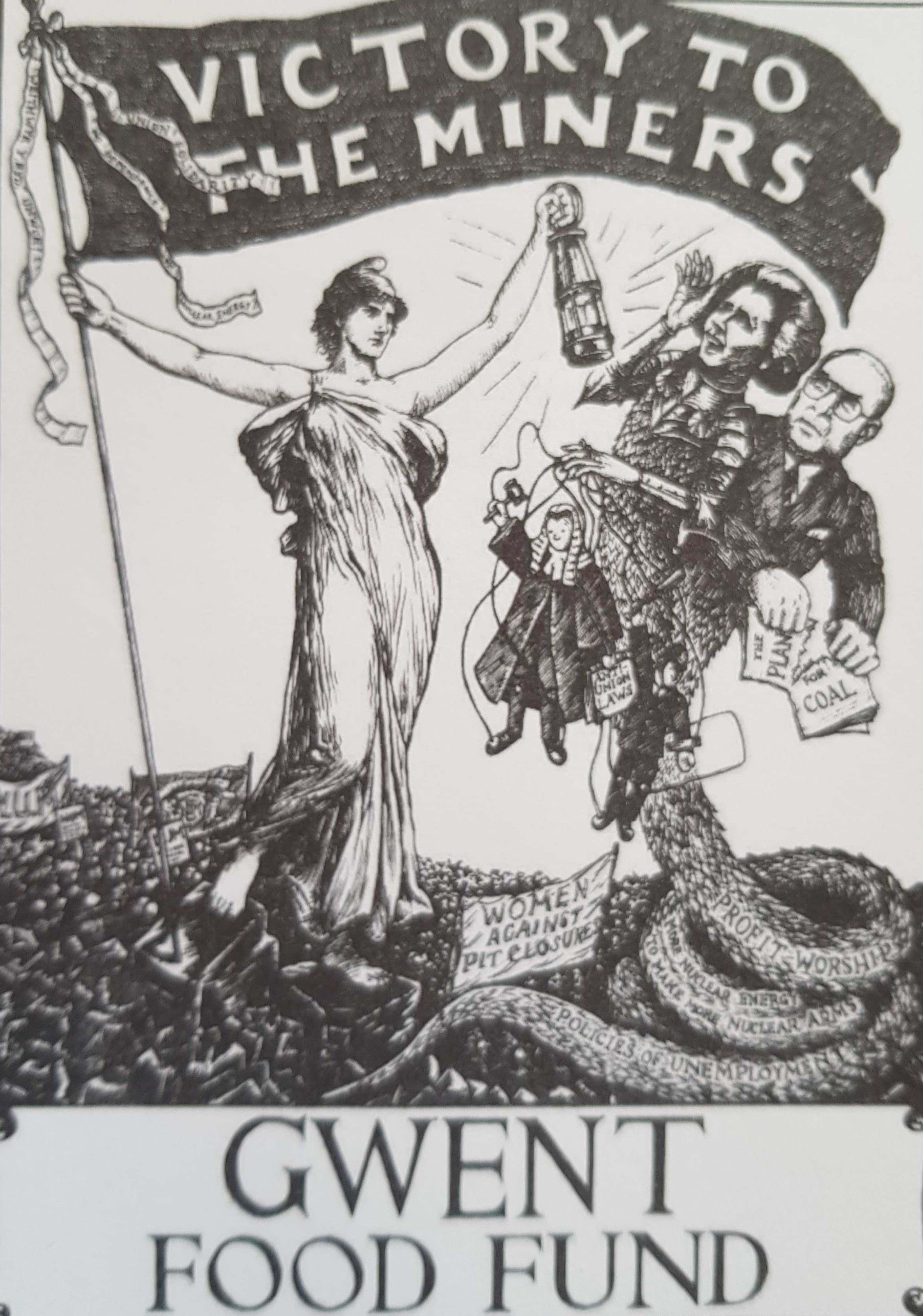
Gwent Food Fund poster 1984/5. By permission of Amgueddfa Cymru – Museum Wales.
Here’s Thatcher:
No milk monitor here; eyes sapphire
and Caligula,
Hoarder of bituminous and DSS payments.
There is no sentimental bias here either. The poet gives it straight to us, from every side. This is something more than literal description: it gets into the emotional truth of things. As does BASTARD NACODS SCABS, accompanied by a picture of graffiti daubed on an outbuilding at The Lady Windsor/Abercynon pit:
The pal who leaves a bus ticket
on the collection plate
says he’ll see his kids Friday
then dumps them for a date,
roars like a lion
but acts like a mouse,
bald as a brick
and part of the house.
On one level this can be construed as an unfair, loaded, unobjective portrayal yet it perfectly expresses the visceral feelings of betrayal that many miners and their families felt when isolated by those around them who had taken their trust.
In This is the BBC we are given a sense of what it is like to be victimized and ambushed while all the while being presented as the one to blame:
Record. Rewind. Reverse.
We walk through open gates,
A thud of hooves behind us.
Or The NUM:
I am here
In your breast pocket,
The size of a bus pass
And the Magna Carta -
been sacked for
been starved for.
Humour and resilience are demonstrated in Our Lady of the Pit Canteen, and throughout the collection there is a grim, reductive and ironic gallows humour in the banter-like word play that anyone brought up in a coal mining community would recognize – the stoic attitude and familiarity with everyday struggle, danger, and tragedy, all turned into a cryptic observation:
You may have jacked and packed pit props
on the roadways to hell,
and raised 14,000 tons week on week
ruled by the bell,
and rode a ghost train through the muck
a fun fair would be proud of….
and thanked the Mother Mary
every time the pit cage docked.
......
but I’ll ’ave tha guts for garters
If them dishes aren’t brought back!
The colloquial tone – honest, funny, no bullshit – sums up a unique community who instead of being valued and included in our society were hunted down, victimized, kettled, and left on reservations of cultural and material poverty that are still there. The poet captures all this in her words without condescension. The values and spirit have been maintained in the face of all that was inflicted, as in Miners Leaning Forwards:
Mortal. Men cropped and cast
Into grey corners
There is no sentiment or pretense that coal mining was a glamorous occupation and the miners themselves were all working-class heroes. One of the finest poems is the elegiac and intensely sad Markham Main:
Afternoons they meet up
on street corners
like old youths planning revolution.
Gaffers, fathers, brothers -
an hour at the club with a pint.
Go over the end again, and again.
How they were the last by three days
To stay out in Yorkshire.
How they’d ‘gu back tomorra’.
After school, they take the grand-kids
to the Pit Top Playground, look forward
to the night shift at Ikea. Together.
This poem is the answer to those who have forgotten or never knew – who say glib and stupid things like “coal mining would have died out anyway”, “it wasn’t a green industry” or “we needed someone like Thatcher.” These hypocritical, ill-informed mantras can still be heard.
Like a baton on the back of your head
Yet quoting piecemeal in this way does not do justice to the cumulative effect of the poems and pictures together. As photograph and poem are linked symbiotically, the inexorable gravitas of poem on poem and image on image hits you with the weight of a ton of imported coal or even a policeman’s baton on the back of the head. By the end, even though I knew what the tragic conclusion was, I was moved to anger, sorrow, pity, and yes, recrimination. A spontaneous overflow of emotions that Wordsworth would have been delighted to conjure.
I began this review with a cliche, so here’s another: L.P. Hartley wrote that “the past is a foreign country”. I thank Sarah Wimbush for providing me with a passport and a means of transport even if the destination I arrived at was depressingly similar to the one I live in now. 40 years down the depressing line Britain is like a rudderless boat in the North Sea. A country of inequality and disunity, of foodbanks, homelessness, drugs, anti-union/freedom legislation. If this is what Thatcher meant by “trickle-down economics” then well done…
In a frightening, collapsing world of conflicts, wars and genocide in Gazza, Ukraine, Yemen, Myanmar, and the Sudan, it is easy to feel powerless and unable to change things. It is also possible to stick your head in the sand and believe that we are, in the big scheme, fortunate that we live in Britain. STRIKE reminds us of two things.
Firstly, that the British state has never been averse to ruthlessly stamping out, by illegal and forceful means if needed, anything it perceives to be a domestic threat or challenge to its corrupt Westminster hegemony. It was Thatcher and her allies who did the striking – at individual and collective freedoms, at the very folk they were charged to protect.
Secondly, there was a time forty years ago when it was possible to take a side and change things for a positive future. Back then, most of us failed abjectly, against The Enemy:
Enemy waving tenners
Enemy raking it in
Enemy living next door
Enemy as kin
Enemy ditch their epaulettes
Enemy waits for dawn
Enemy cries casus belli
Enemy bends every law
As the anniversary documentaries appear on our screens, the memoirs are published, the justifications, denials and excuses are aired, we desperately need books like STRIKE that are able to realign us with the objective truth of history. In STRIKE the combination of contemporary photography with metaphor and word imagery provides the reader with the big sociological picture. The enormity and significance and causes of the last Miners’ Strike are revealed vividly. We shouldn’t forget again. History cannot be changed but the future can. What the book proves is that “Our language still exists” if nothing else.
I'll end with some verses from Death by Strike:
Strike is a black lily
falling through the air
like a broken house brick.
Strike is the pressure
of a coal wagon
on a picket line at Ferrybridge.
Strike is a caber
tossed onto a Ford Cortina
inside a concrete block.
STRIKE by Sarah Wimbush, Stairwell Books, ISBN 978-1-913432-80-5, £15. Available here or a signed copy by request on X @SarahWimbush

